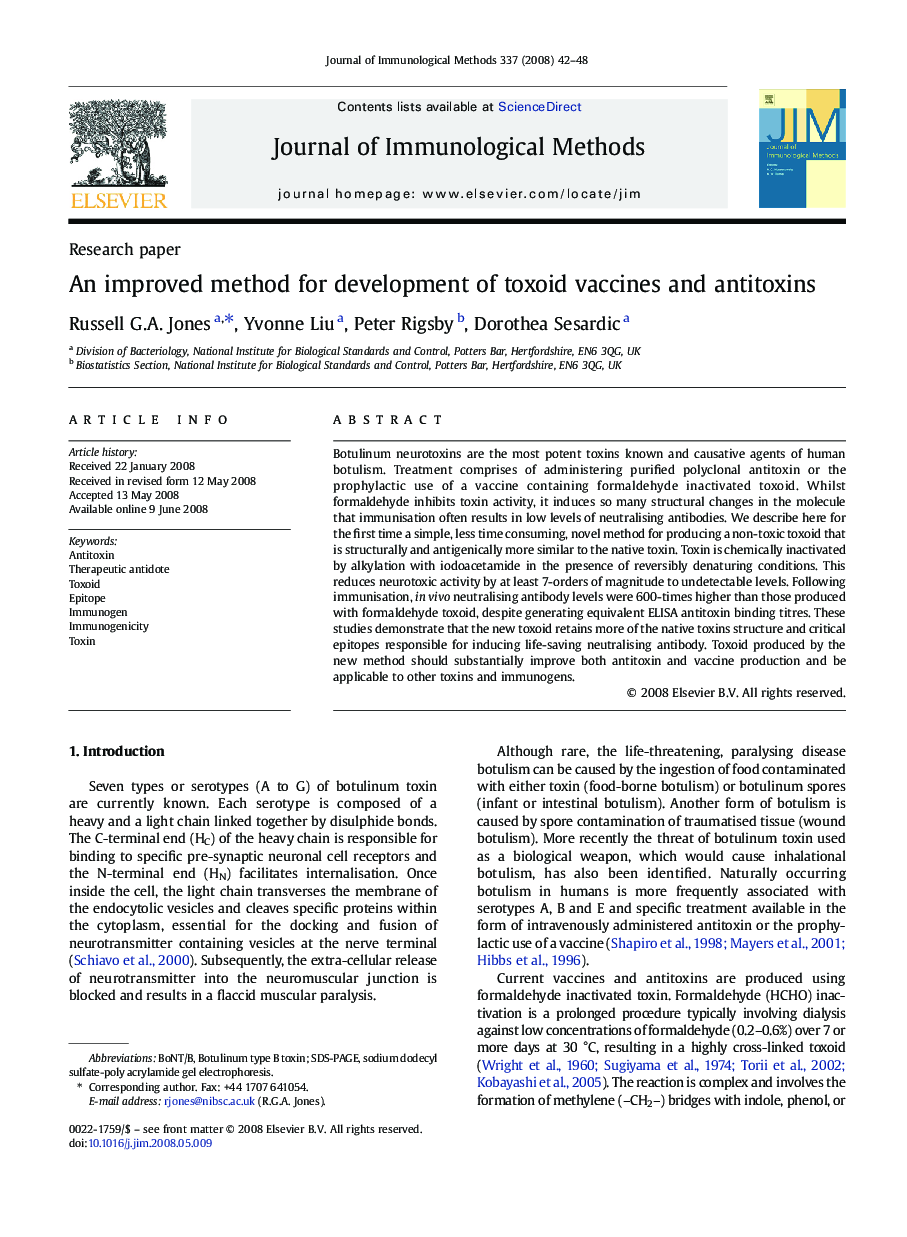| Article ID | Journal | Published Year | Pages | File Type |
|---|---|---|---|---|
| 2089194 | Journal of Immunological Methods | 2008 | 7 Pages |
Botulinum neurotoxins are the most potent toxins known and causative agents of human botulism. Treatment comprises of administering purified polyclonal antitoxin or the prophylactic use of a vaccine containing formaldehyde inactivated toxoid. Whilst formaldehyde inhibits toxin activity, it induces so many structural changes in the molecule that immunisation often results in low levels of neutralising antibodies. We describe here for the first time a simple, less time consuming, novel method for producing a non-toxic toxoid that is structurally and antigenically more similar to the native toxin. Toxin is chemically inactivated by alkylation with iodoacetamide in the presence of reversibly denaturing conditions. This reduces neurotoxic activity by at least 7-orders of magnitude to undetectable levels. Following immunisation, in vivo neutralising antibody levels were 600-times higher than those produced with formaldehyde toxoid, despite generating equivalent ELISA antitoxin binding titres. These studies demonstrate that the new toxoid retains more of the native toxins structure and critical epitopes responsible for inducing life-saving neutralising antibody. Toxoid produced by the new method should substantially improve both antitoxin and vaccine production and be applicable to other toxins and immunogens.
